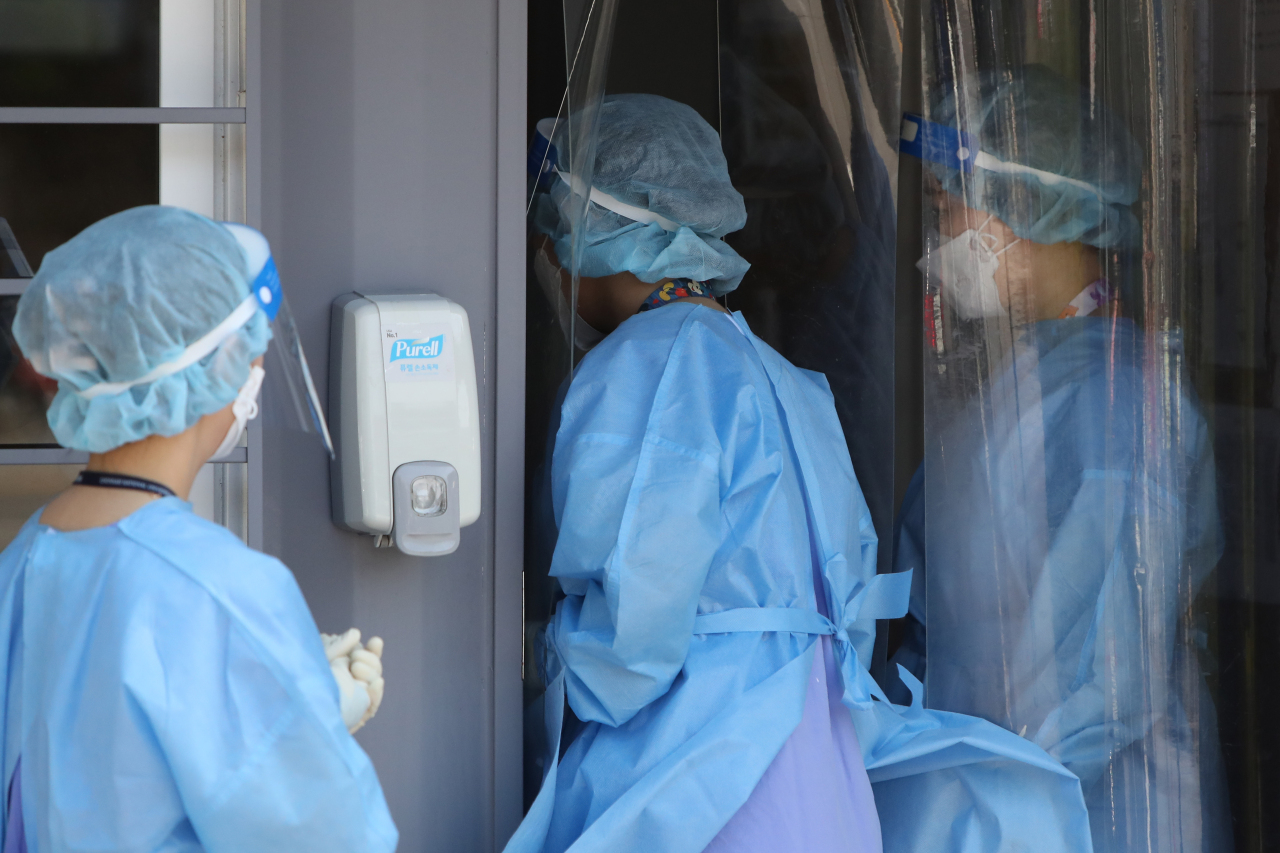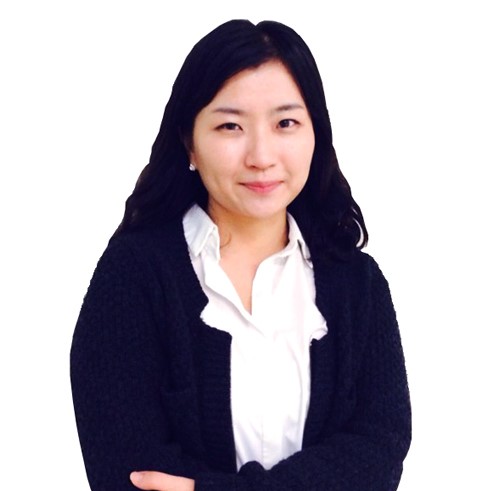South Korea gears up for flu season, Chuseok in COVID-19 fight
By Park Han-naPublished : Sept. 7, 2020 - 15:33

The government has expanded its flu vaccination program to help protect vulnerable people and preempt the chaos expected from the arrival of a flu season amid the COVID-19 pandemic.
According to Jung Eun-kyeong, director of South Korea’s Centers for Disease Control and Prevention, the government will expand free vaccine eligibility to 19 million people, or 37 percent of the total population, from 13.8 million people ahead of flu season. The vaccination campaign will start Tuesday for children. Elderly people will start to receive vaccinations in mid-October.
As influenza prevention becomes more important due to the epidemic of COVID-19 this year, the government has expanded the scope of free vaccinations to include those aged between 13 and 18 as well as those aged 62 to 64.
Jung said approval procedures were underway for combination diagnostic test kits that could test for both the flu and COVID-19.
“Distinguishing patients with COVID-19 from those with influenza is very important for antivirus measures this fall, as the two have similar symptoms,” she said.
Over the two weeks ending Sept. 5, the country saw a sixfold increase in the number of seriously or critically ill COVID-19 patients compared with the previous 14-day period, an average of 82.4 people.
One in 3 of those newly diagnosed with COVID-19 during that time was 60 years of age or older, according to the Central Disaster and Safety Countermeasures Headquarters.
The daily new case count for the novel coronavirus in Korea increased by 119, bringing the total caseload to 21,296, according to the KCDC on Monday. It was the fifth day in a row that the daily tally remained below 200.
The death toll rose by two to 336. The fatality rate stands at 1.58 percent.
Health Minister Park Neung-hoo urged the public to comply with the government’s strengthened Level 2 social distancing system so that the rules, the most stringent to be implemented in the country so far, could be lifted after this week.
“Ten days ago on Aug. 27, there were 434 confirmed daily cases, but we have managed to maintain daily infection cases below 200 for the fifth straight day. The public’s active participation and patience are yielding results little by little,” he said.
Alarmed by the spike in the daily tally in late August, starting Aug. 30 the health authorities added restrictions for high-risk facilities in Seoul and neighboring areas, including indoor locations where people gather and eat together such as restaurants, bakeries and franchise coffee chains.
The tougher “Level 2.5” rules for Seoul, Gyeonggi Province and Incheon will remain in place until Sunday. The nationwide Level 2 social distancing rules are due to remain in place until Sept. 20.
Of the 119 new cases, 47 were reported in Seoul, 30 in Gyeonggi Province and one in Incheon, adding up to 78 for the Greater Seoul region as a whole.
The combined figure for Greater Seoul fell below 100 for the first time since Aug. 15, partly due to the lower volume of testing on the weekend.
The Seoul Metropolitan Government warned of small gatherings among family members and friends, citing a new sporadic infection trend popping up in Yeongdeungpo-gu and Gwanak-gu.
“Under the strengthened social distancing measure, small gatherings such as eating-out meetings should be avoided,” disease control officer Park Yoo-mi said during a briefing.
She expressed concern over the death toll, which has been growing rapidly in the city. Some 11 people have died since Aug. 12, as compared with 17 deaths reported over the six months between Jan. 24 and Aug. 11.
“Especially, those who have underlying diseases over 60 should refrain from going out and comply with the prevention rules,” the officer said.
The alert level cannot be relaxed because the proportion of untraceable cases stands at 22 percent and sporadic infection clusters have been reported across the country persistently, according to the health minister.
“The increase in the number of severe patients, which surged every day, has also eased, but 162 people are still undergoing severe treatment,” Minister Park added.
The total number of people released from quarantine after making full recoveries stood at 16,297, up 151 from the previous day. The country has carried out 2,051,297 coronavirus tests since Jan. 3.
The health minister reiterated the government’s call for the public to refrain from traveling to hometowns or visiting relatives during the five-day break for Chuseok, the biggest traditional holiday here, which starts Sept. 30.
Taking into account lessons that it has learned from the steep increase in virus infections following public holidays, the government announced Sunday its plan to designate the five days between Sept. 30 and Oct. 4 as a special antivirus period, applying virus control measures tantamount to Level 2 social distancing.
“We may have to suffer bigger sacrifices than now if the virus spreads nationwide again through the mass migration to their hometowns,” Minister Park said.
Korea Railroad Corporation said Monday that it will offer only 50 percent of its bullet train tickets for the Chuseok holiday period, or 1 million seats, to help passengers maintain a safe distance from each other.
“Considering the seriousness of the COVID-19 situation, we decided to sell window seats only to make a safe holiday. We ask for passengers’ understanding as they will have to sit apart from their family members,” the train operator said. Train reservations will be available online Tuesday and Wednesday.
By Park Han-na (hnpark@heraldcorp.com)







![[Graphic News] More Koreans say they plan long-distance trips this year](http://res.heraldm.com/phpwas/restmb_idxmake.php?idx=644&simg=/content/image/2024/04/17/20240417050828_0.gif&u=)
![[KH Explains] Hyundai's full hybrid edge to pay off amid slow transition to pure EVs](http://res.heraldm.com/phpwas/restmb_idxmake.php?idx=644&simg=/content/image/2024/04/18/20240418050645_0.jpg&u=20240419100350)






![[From the Scene] Monks, Buddhists hail return of remains of Buddhas](http://res.heraldm.com/phpwas/restmb_idxmake.php?idx=652&simg=/content/image/2024/04/19/20240419050617_0.jpg&u=20240419175937)

![[KH Explains] Hyundai's full hybrid edge to pay off amid slow transition to pure EVs](http://res.heraldm.com/phpwas/restmb_idxmake.php?idx=652&simg=/content/image/2024/04/18/20240418050645_0.jpg&u=20240419100350)

![[Today’s K-pop] Illit drops debut single remix](http://res.heraldm.com/phpwas/restmb_idxmake.php?idx=642&simg=/content/image/2024/04/19/20240419050612_0.jpg&u=)